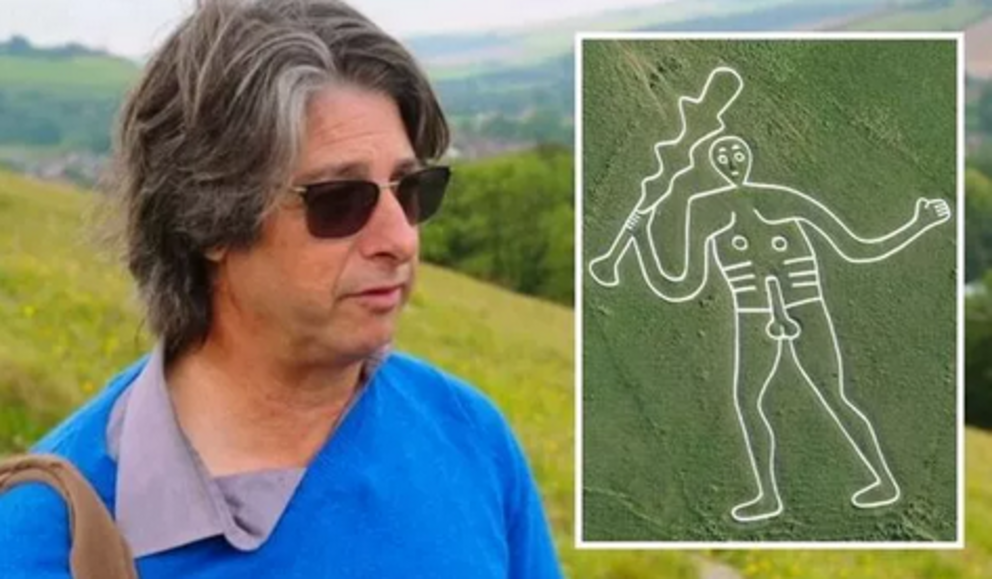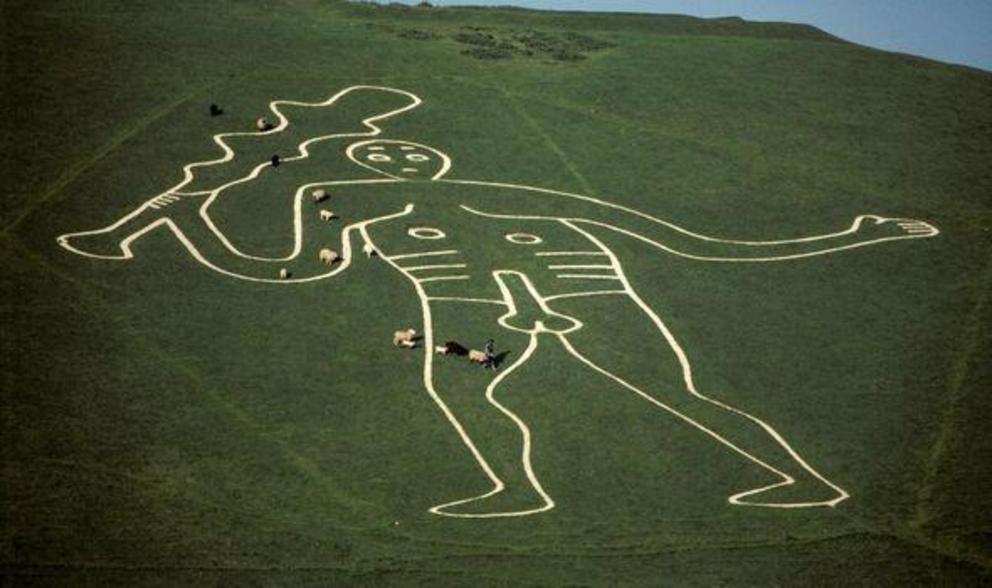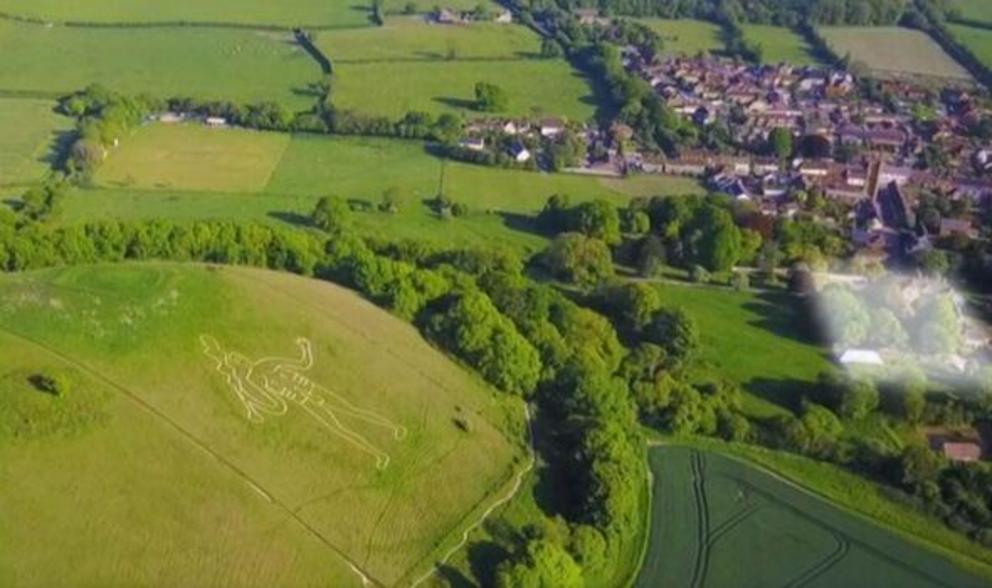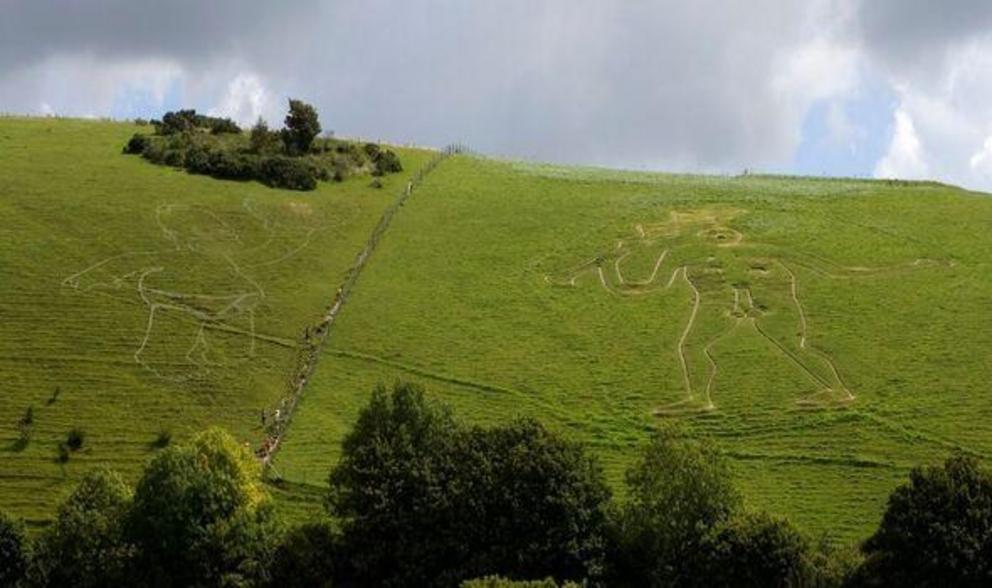Archaeologists puzzled how ‘big clue’ over Cerne Abbas Giant’s age was missed
Carved into the hillside of rural Dorset is a 55-metre tall naked man wielding a huge club in his right hand. With an 11-metre erection on full display, he is England’s largest and rudest chalk hill figure. Situated near the village of Cerne Abbas, he was created by scouring away at grass to reveal the white chalk below and filling the trenches with more chalk from nearby quarries. Alongside the Long Man of Wilmington in East Sussex, he is one of two remaining human hill figures in England.
Both have scheduled monument status, giving them protection against unauthorised change. Yet both have been the source of intense mystery and fascination for many hundreds of years. Until recently, nobody knew who created him, or when, or why. Archaeologists and camera crews from the BBC’s Digging for Britain series headed to the southwest to carry out their own analysis. Though the earliest written record dates back to the late 17th Century, antiquarians speculated it could have been a Saxon deity, while others believed it could have been a Roman-made figure.

Dr Mike Allen hinted the club, or staff had been largely ignored.

The Giant has been a source of intense speculation for years.
In July 2020, a survey of snail shells unearthed at the site suggested that the Giant is “medieval or later”, as no snails from the Roman period were found at the site. A further survey, using optically stimulated luminescence, analysed samples from the deepest layers of sediment, pointing to a construction date of 700-1100AD — the early medieval and late Anglo-Saxon period. Professor Alice Roberts, the Digging for Britain presenter, said archaeologists might have missed a “big clue” right under their noses when investigating the Giant’s age. Dr Mike Allen, an environmental archaeologist, told the documentary: “That’s one thing that archaeologists are normally very good at — saying why they’re there, what was happening and what date they are.”
He added: “Everyone seems to have been carried away with his nakedness and the member. Carved into the hillside of rural Dorset is a 55-metre tall naked man wielding a huge club in his right hand. With an 11-metre erection on full display, he is England’s largest and rudest chalk hill figure. Situated near the village of Cerne Abbas, he was created by scouring away at grass to reveal the white chalk below and filling the trenches with more chalk from nearby quarries.
Alongside the Long Man of Wilmington in East Sussex, he is one of two remaining human hill figures in England. Both have scheduled monument status, giving them protection against unauthorised change. Yet both have been the source of intense mystery and fascination for many hundreds of years.
Until recently, nobody knew who created him, or when, or why.
Archaeologists and camera crews from the BBC’s Digging for Britain series headed to the southwest to carry out their own analysis. Though the earliest written record dates back to the late 17th Century, antiquarians speculated it could have been a Saxon deity, while others believed it could have been a Roman-made figure. In July 2020, a survey of snail shells unearthed at the site suggested that the Giant is “medieval or later”, as no snails from the Roman period were found at the site. A further survey, using optically stimulated luminescence, analysed samples from the deepest layers of sediment, pointing to a construction date of 700-1100AD — the early medieval and late Anglo-Saxon period.
Professor Alice Roberts, the Digging for Britain presenter, said archaeologists might have missed a “big clue” right under their noses when investigating the Giant’s age.
Dr Mike Allen, an environmental archaeologist, told the documentary: “That’s one thing that archaeologists are normally very good at — saying why they’re there, what was happening and what date they are.”
He added: “Everyone seems to have been carried away with his nakedness and the member.

The abbey (white square) once stood beneath the Giant.
“No one had really talked about the obvious — the Abbey sitting behind us.”
Prof Roberts explained that below the Giant once lay Cerne Abbey, founded in 987AD, right in the middle of the period archaeologists now know the Giant was created. She asked Martin Papworth, a National Trust archaeologist, what connection a huge naked figure might have to a Benedictine monastery.
He explained: “Just right next to his outstretched hand is, in fact, the abbey, which was established at the same time.”
The Abbey’s wealth was created predominantly by pilgrims worshipping the local holy man, St Eadwold of Cerne. Legend has it that he lived as a hermit on a nearby hill after he planted his wooden staff on the ground there, and it miraculously grew into a tree. Prof Roberts suggested the Giant’s club could actually be a staff sprouting leaves.
Mr Papworth asked: “Is he St Eadwold? What do I think? I don’t know who he is.
“But this medieval date makes all sorts of theories possible.”
Others, however, have speculated on different theories.

Homer Simpson has drawn next to the Giant in a 2007 publicity stunt.
Alison Sheridan, a freelance archaeological consultant, told the New Scientist: “It would almost seem to be an act of resistance by local people to create this fantastically rude pagan image on the hillside. It’s like a big two fingers to the abbey.”
National Trust researchers flew sophisticated drones over the Giant in July 2020 and carefully examined the images afterwards. Their findings hinted the Giant’s phallus might not be original, and subtle shifts in the earthworks may have been made around the 18th Century.
He told the Washington Post that “there appears to be an outline of a belt”, suggesting that once upon a time he might not have been naked at all.
Either way, more research is required to get to the bottom of this long-lasting source of fascination. The Cerne Abbas Giant, regardless of its age, has become a crucial part of local culture and folklore. In 2007, a giant Homer Simpson brandishing a doughnut was drawn next to the Giant as a publicity stunt for the opening of The Simpsons Movie.
In 2012, pupils and members of the local community recreated the Olympic torch on the Giant, marking the passing of the official torch in the build-up to the London 20212 Olympics. He has appeared in several films and TV programmes too, and his image has been reproduced on various souvenirs and local food produce labels.
He has remained a prominent tourist attraction in the region, with most tourist guides recommending a ground view from the ‘Giant’s View’ lay-by and car park just off the A352.
